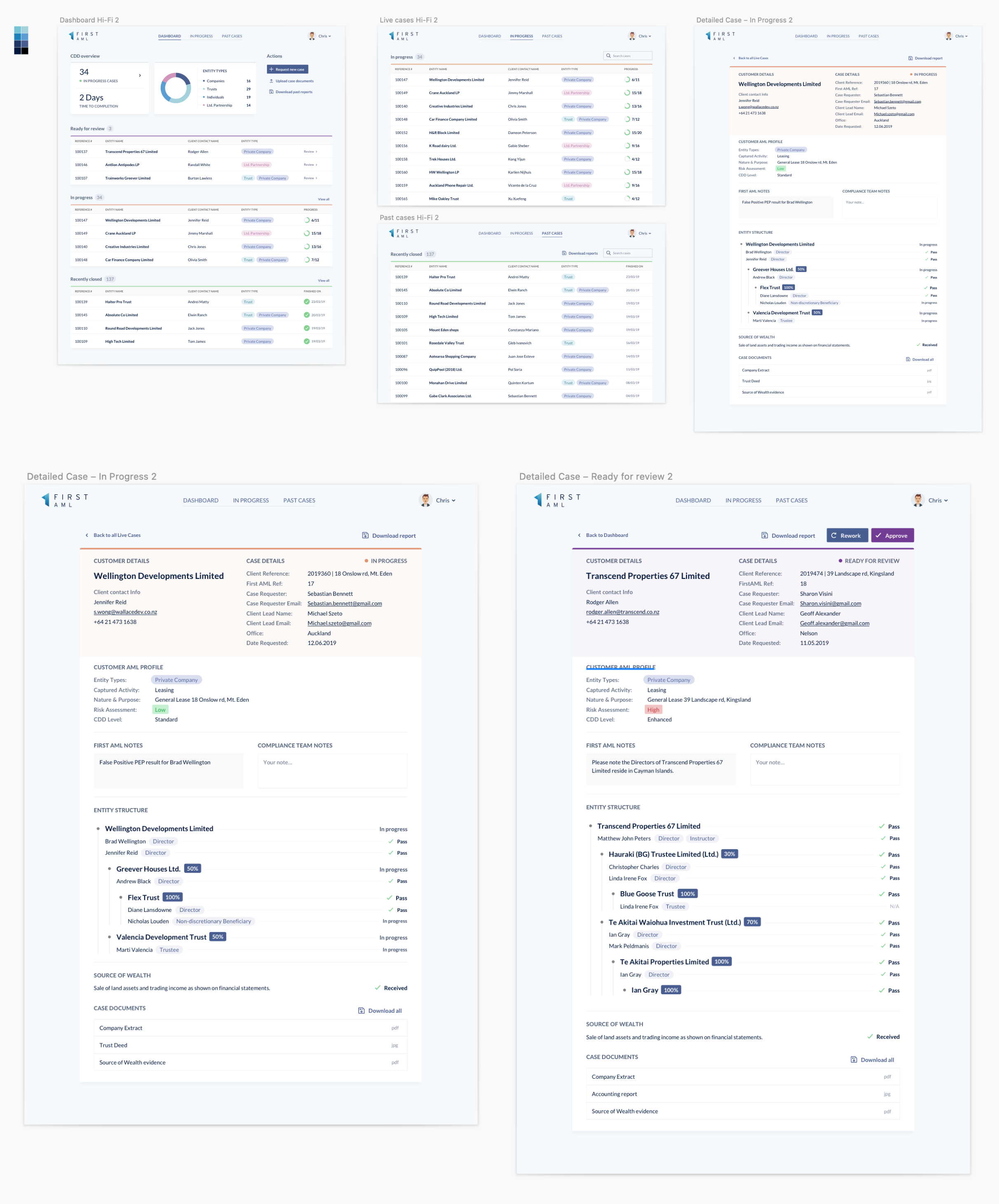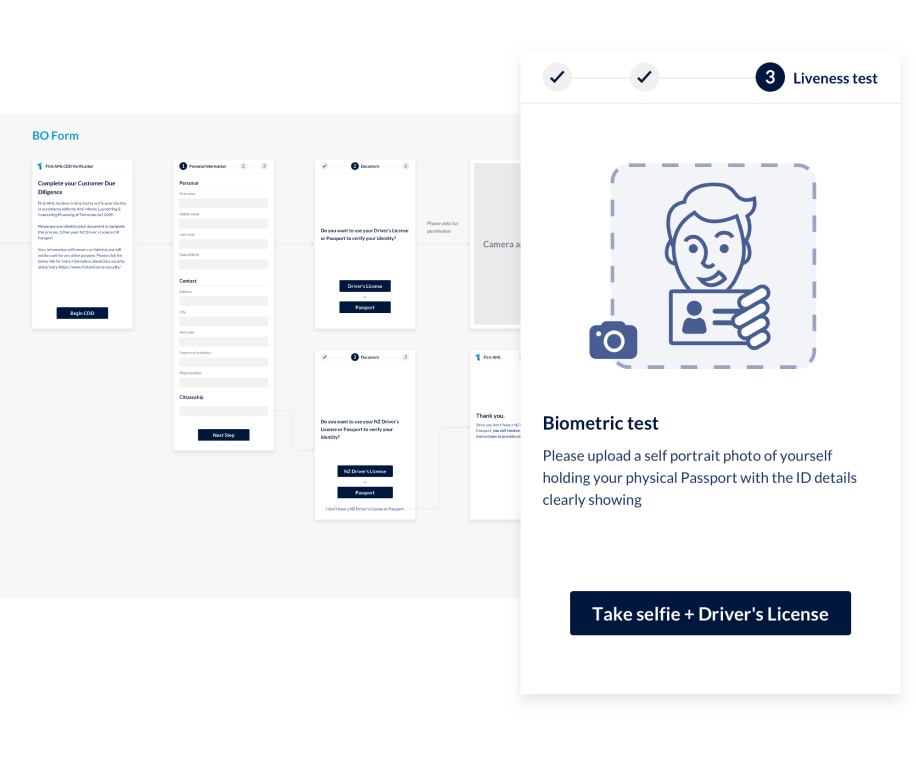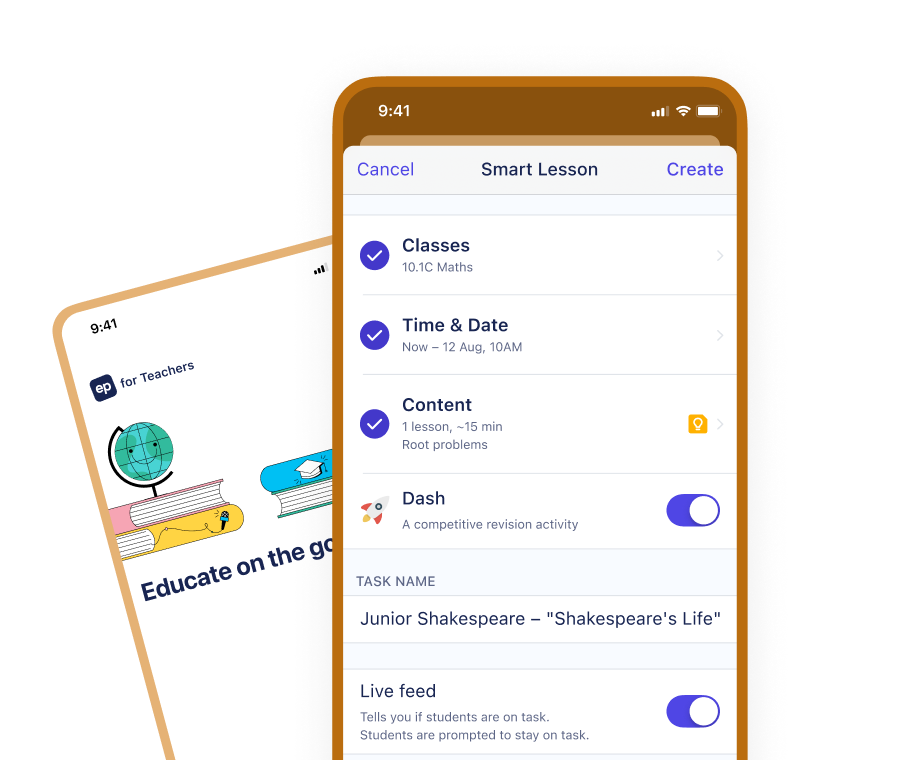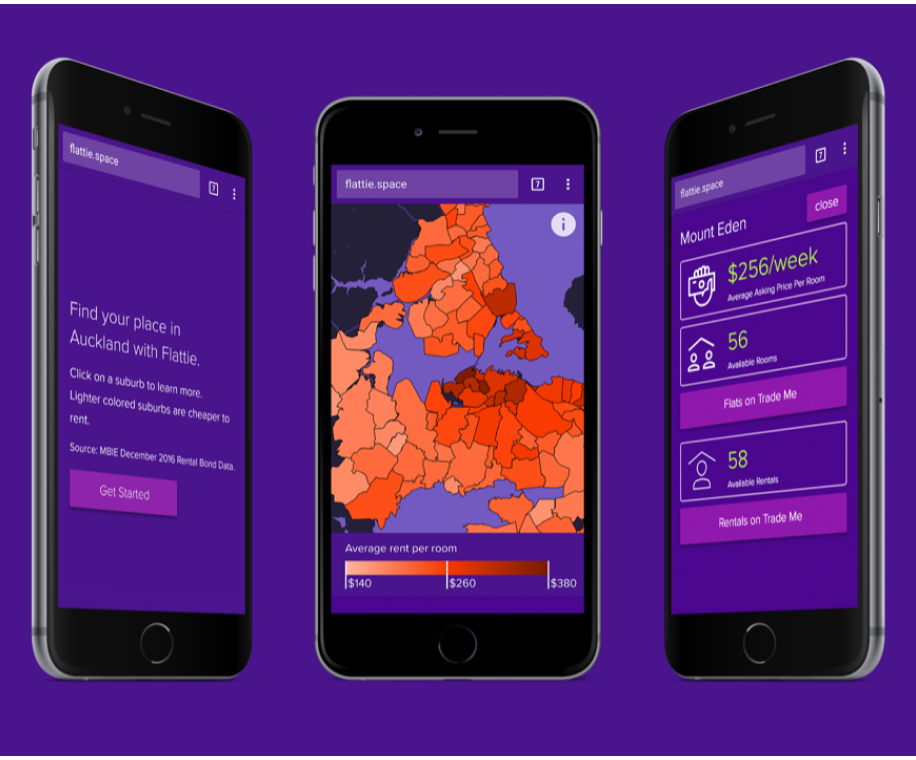
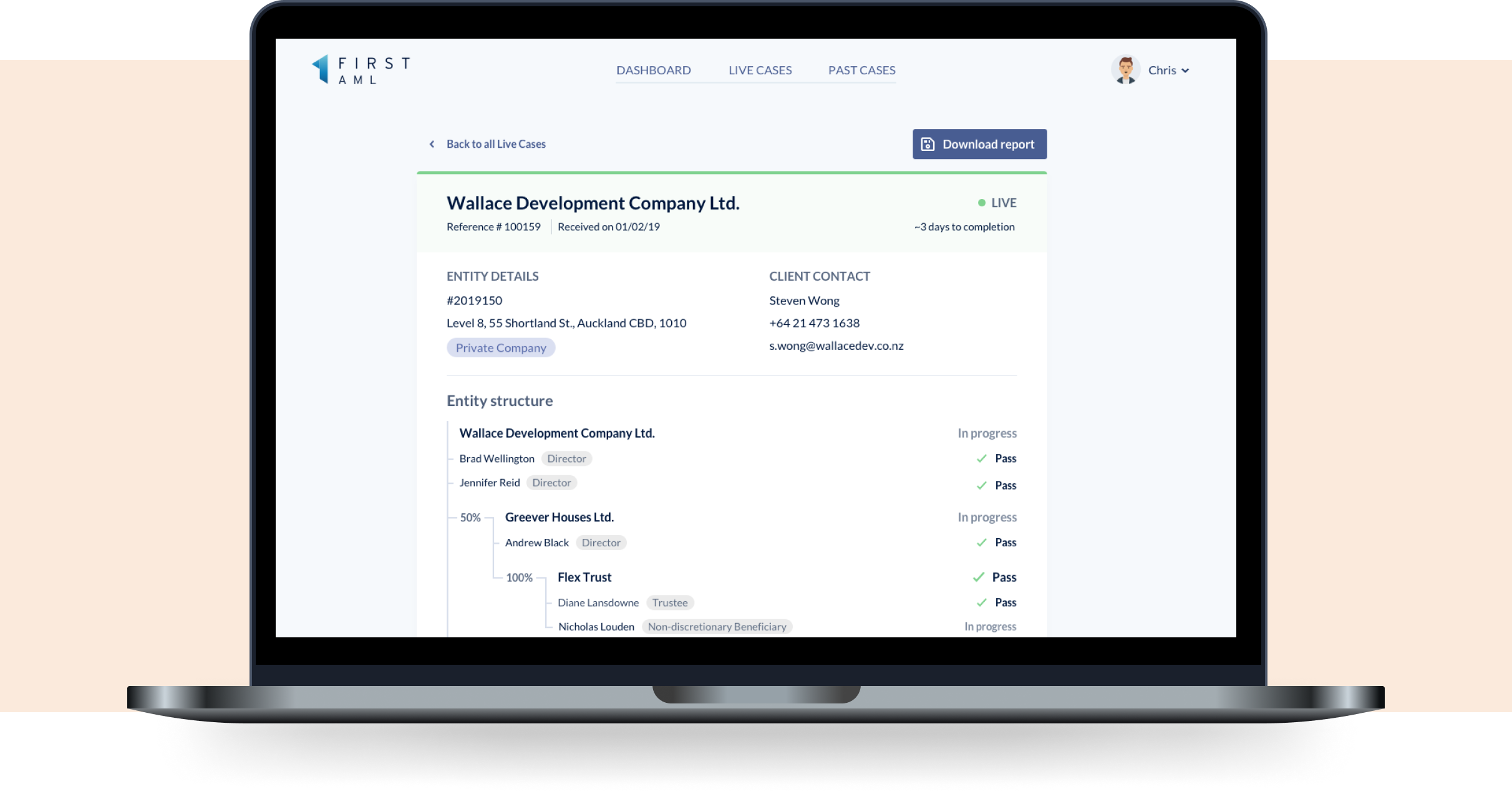
It all starts with a conversation and understanding the landscape of the problem. For us it was, plainly, an outdated process that needs updating. AML and CDD processes, classically, are spread across various entities & people, contacted via email, phone or in-person. Hardly possible to streamline and scale.
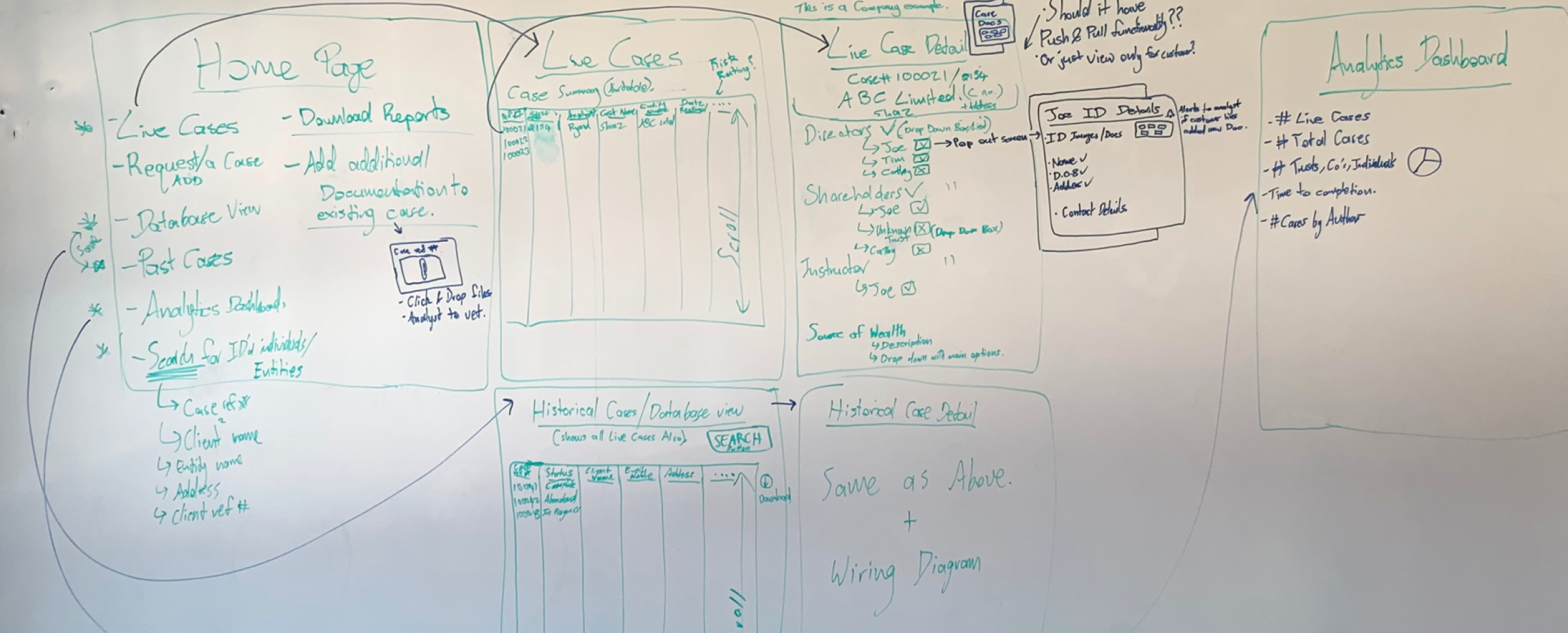
The company already had a working solution, a hacky and not so fit-for-purpose Airtable workflow that hinged on data aggregation and database organisation – not a product the company was ready to expose to their clients, rendering it an internal tool.
We set our sights on a bespoke web-app.
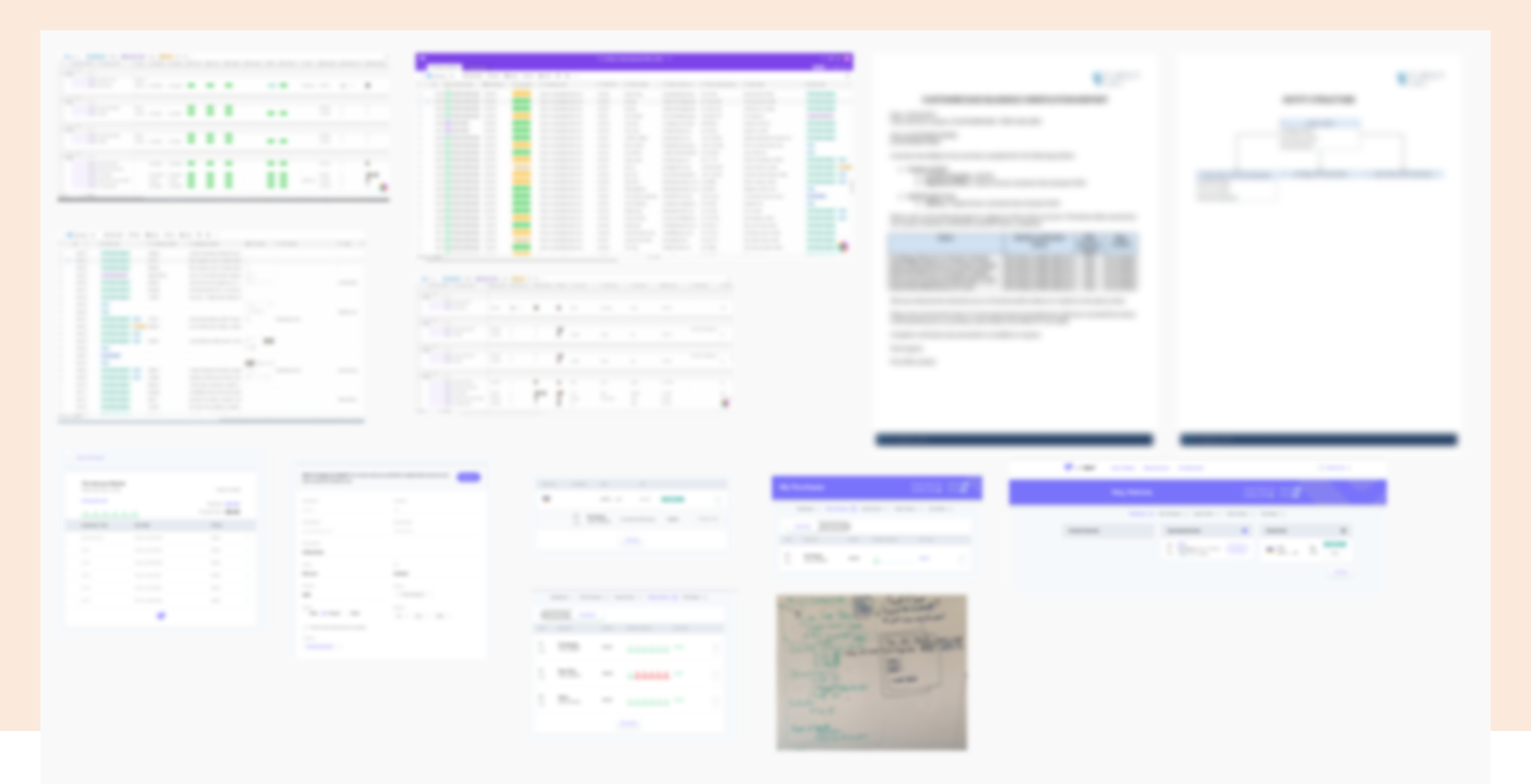
Exisiting workflow/screen examples (blurred for confidentiality)
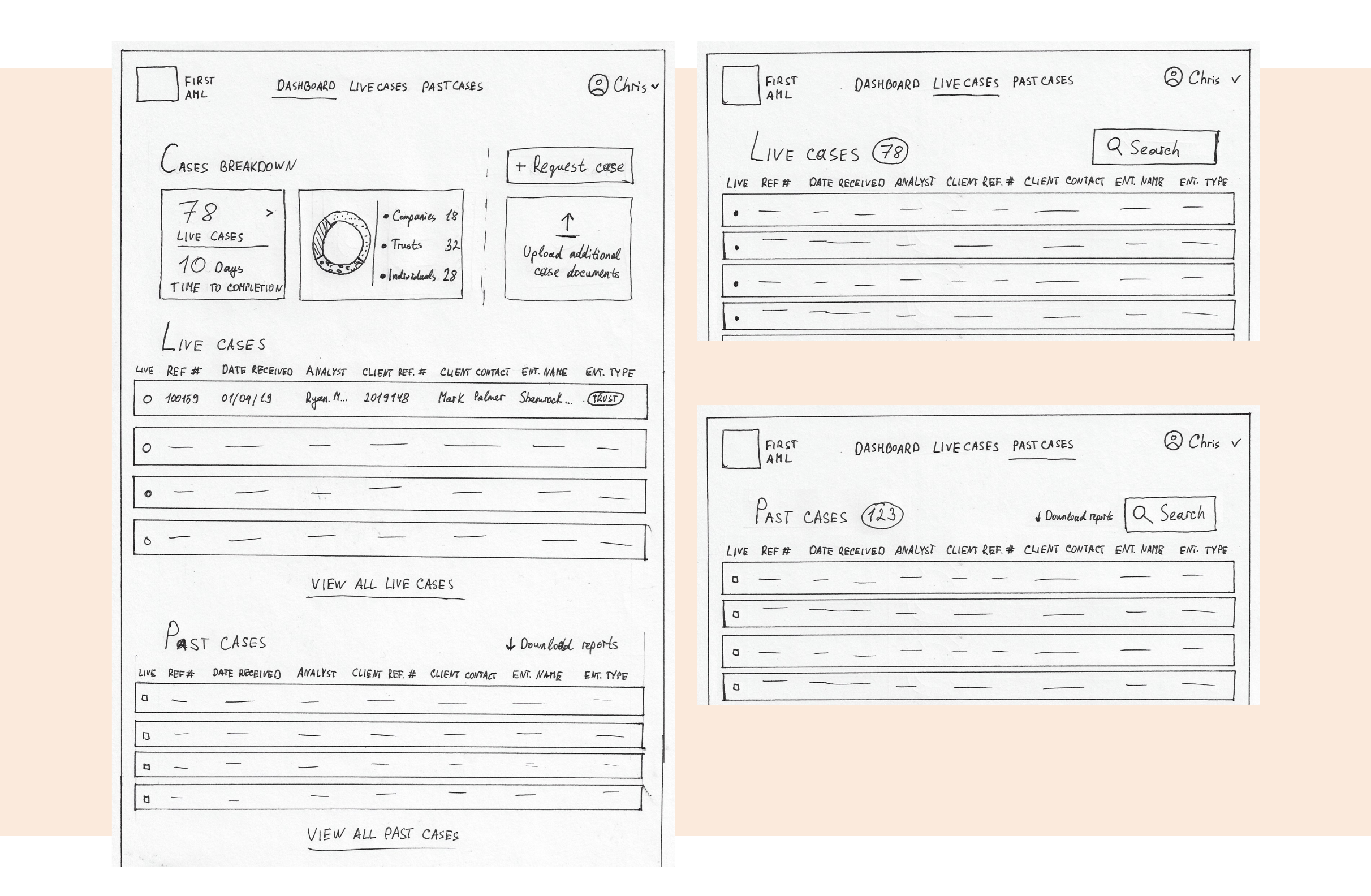
Through a series of iterations, we landed on the interface looking largely like this:
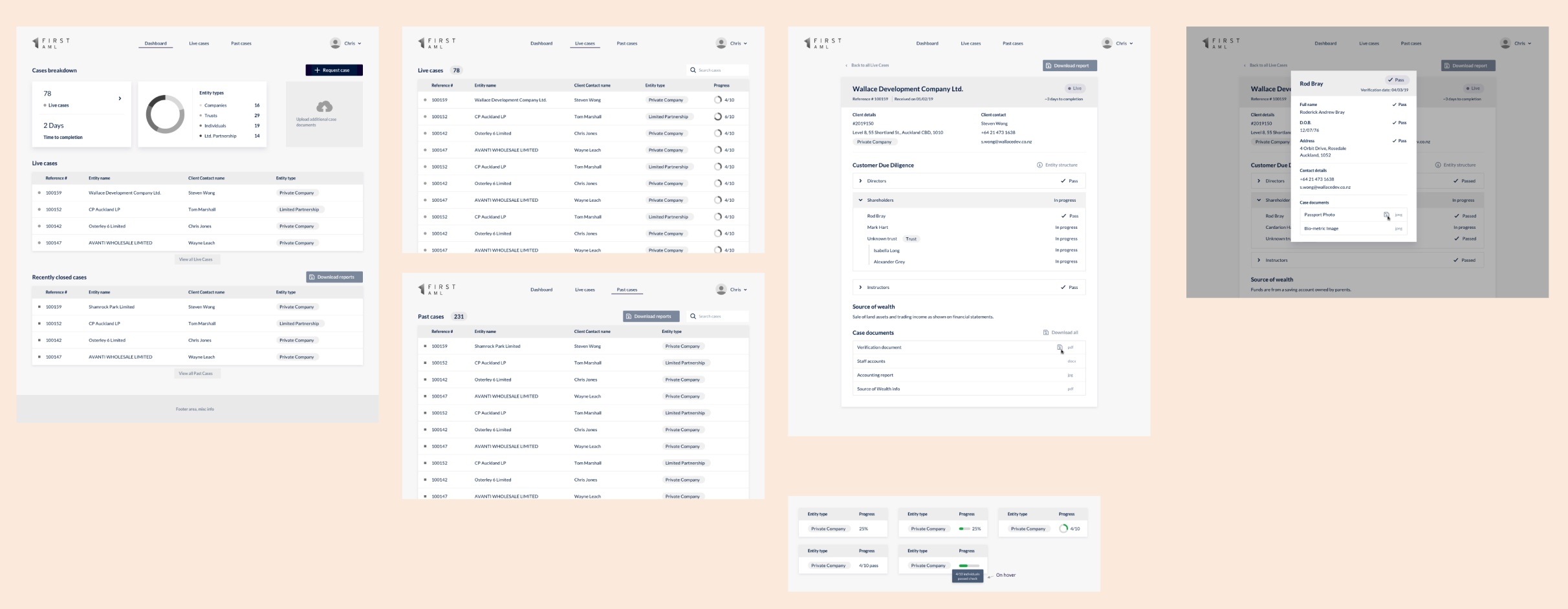
This interface was tested with, as per availability, with the internal AML team and answered most of their needs: streamlined process, information architecture that makes sence, good data discoverability and timely notifications.
The missing piece of the puzzle, for which this UI was already accounting for, was a question – how do we populate our internal database? The challenge was the complex company structures with a myriad of directors, owners, trustees, beneficiaries etc.
We needed a tool that can:
The visual aspect representing the company structure was a challenge, here’s how I solved it:
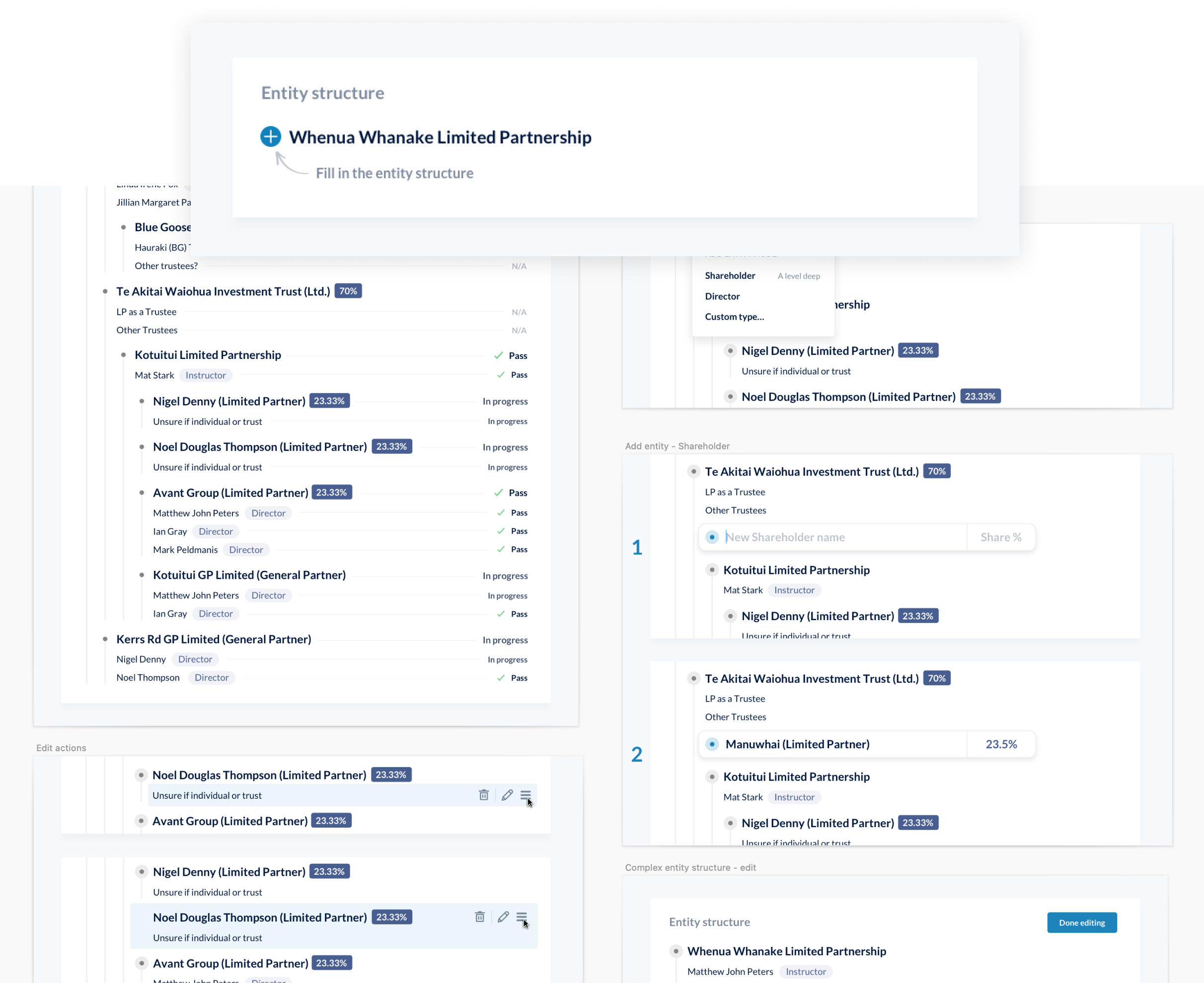
Exisiting workflow/screen examples (blurred for confidentiality)
I knew that any visual editing tool can be a challenge to build for even experienced engineers, time being the main constraint. That’s where the component breakdown and alignments based on a strict grid come in (mobile responsive design was not a requirment for this project). We decided to use Material design as a framework.
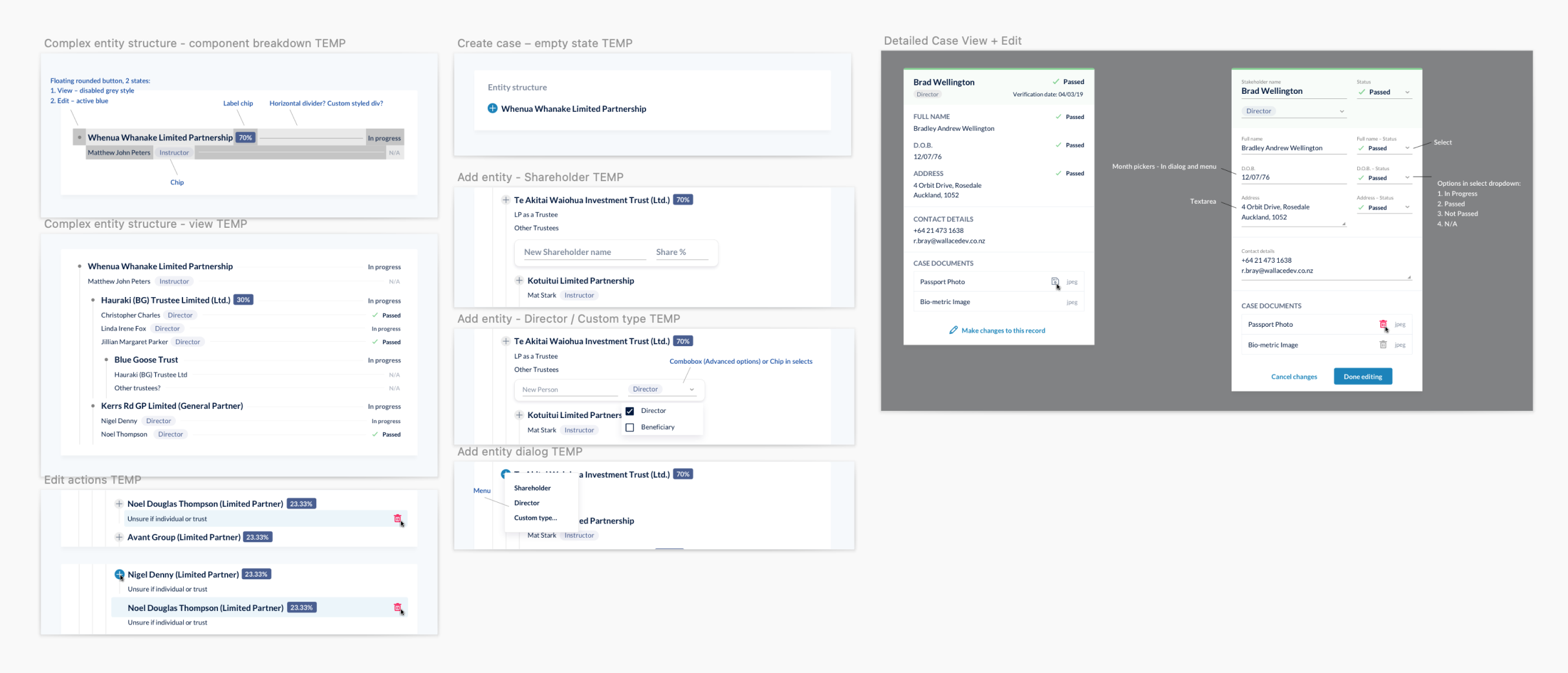
The project deliverables included: full engineer-ready specifications on inVision, iconography & asset packs, descriptive & visual product flow. I’ve also provided ongoing engineering support for the duration of the project build.
